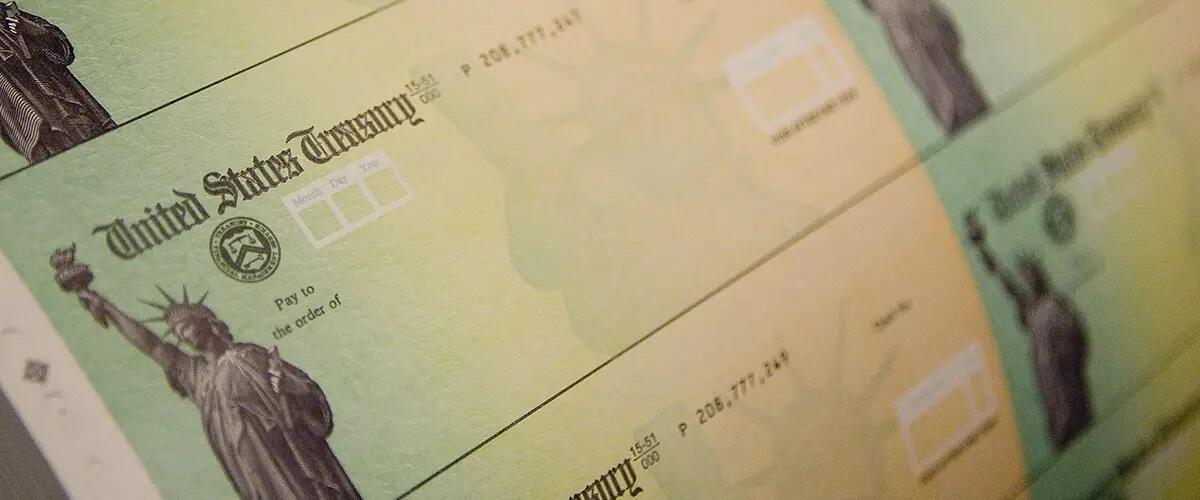
Business Insight: How to spend your stimulus check
This piece was originally published as an Op-Ed in The Star-Ledger.
By John Longo
After fierce debate, the American Rescue Plan Act of 2021 was signed into law by President Biden on March 11. For most people, the centerpiece of the legislation is the stimulus payment, which may reach up to $1,400 in value per individual.
Individuals earning $80,000 or more, married couples (filing jointly) earning $160,000 or more, and heads of households earning $120,000 or more will not receive a stimulus payment. A qualified family of four may receive up to $5,600 in stimulus payments, likely the largest direct payment most families have ever received from the U.S. government. The government even provides a way for people to check on the status of their checks.
For some, the stimulus checks represent a desperately needed financial lifeline, while for others, fortunate to be largely unaffected by the COVID-19 pandemic, it is an unexpected windfall. Those outside of the income limits who receive a stimulus payment may make their own assessment of the value of their tax dollars being used to fund the Act.
Here, for those who are receiving them, I offer some suggestions on how to triage your stimulus check(s).
First, if you have any unpaid bills, including rent, car payments, utilities, educational, healthcare and other expenses, try to pay them off in full. For some greatly affected by the pandemic, this task will be impossible but for others, it is an opportunity to get a clean slate and rebuild your credit rating.
Second, pay off high-interest rate credit cards. Most credit cards charge interest rates from the high teens to low 20s in percentage terms. Even super investors, like Warren Buffett, can’t keep up with those types of returns over the long haul. Many individuals have been forced by financial circumstances to meet only the required minimum payments on their credit cards. Once your bills are paid, use the stimulus check to pay your credit cards off in part or full.
Third, contribute toward an emergency fund if you haven’t yet established one. Many surveys have found that a large percentage of households would struggle to come up with $400 in the event of an emergency. The pandemic has turned this conceptual question into a very real one with potentially devastating human consequences. Many are seeing light at the end of the tunnel related to the current crisis as vaccines are distributed and the economy continues to reopen. Now is the time to prepare for the next financial crisis in your life by funding an emergency fund. Aim for a fund sufficient to cover three months in living expenses, but in the longer-term shoot for a larger nest egg covering 12 months of expenditures.
Fourth, invest your stimulus check for the long-term. The stock market is usually a good outlet for investment funds for those with a long-term horizon. Index funds are a smart choice for many investors, but for those who want to try selecting individual securities, focus on profitable firms in an industry that you are familiar with. If you want income from your portfolio, consider dividend-paying stocks. If you are worried about investing with most stock indexes near all-time highs, consider a dollar-cost averaging approach. That is, invest a portion of the funds over a six to 12-month period to avoid investing the entire amount at a market peak.
Fifth, consider donating to charitable organizations. Some individuals are fortunate enough to work for firms that may have benefited from the pandemic, such as Zoom, Moderna, Amazon.com, Microsoft, and a host of other companies. If you were not expecting any type of stimulus check and received one, consider using it to help those still struggling from the effects of the pandemic or for other causes that you care deeply about. There is no shortage of good charities out there, but those focused on food insecurity, healthcare and equity-related issues may be most appropriate at this juncture.
Sixth, do something nice for yourself or for someone you care about. The pandemic has taken a deep psychological toll on many people. Even for those who have not been greatly affected financially or health-wise, the sequestered environment over the past year has been bizarre to say the least. Consider giving yourself a present with a small portion of the stimulus funds. It may be your favorite meal, an article of clothing, an item for your home — or anything else that would make you or a loved one smile.
Direct payments of this magnitude from the U.S. government to individuals are unlikely to occur again for the foreseeable future due to budgetary constraints and the slowly receding pandemic. Therefore, I urge you to think carefully about how to spend any stimulus funds that you may receive.
John Longo is a professor of practice in the Finance & Economics Department at Rutgers Business School and co-author of “Buffett’s Tips: A Guide to Financial Literacy and Life.
Press: For all media inquiries see our Media Kit


